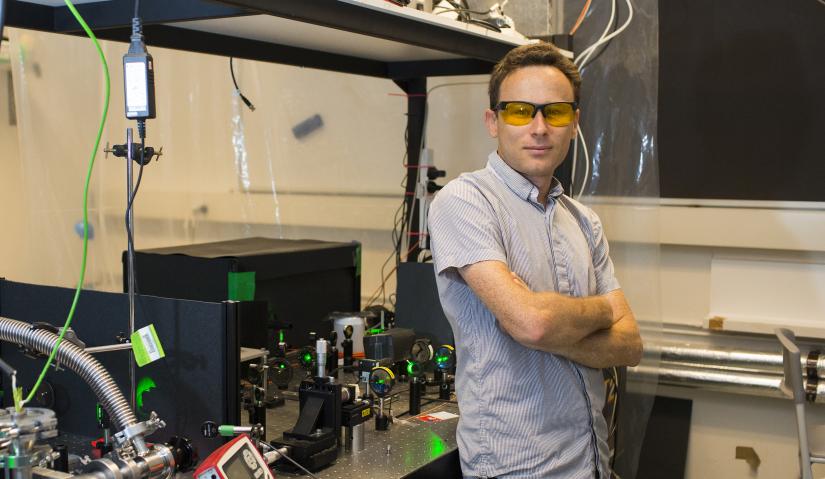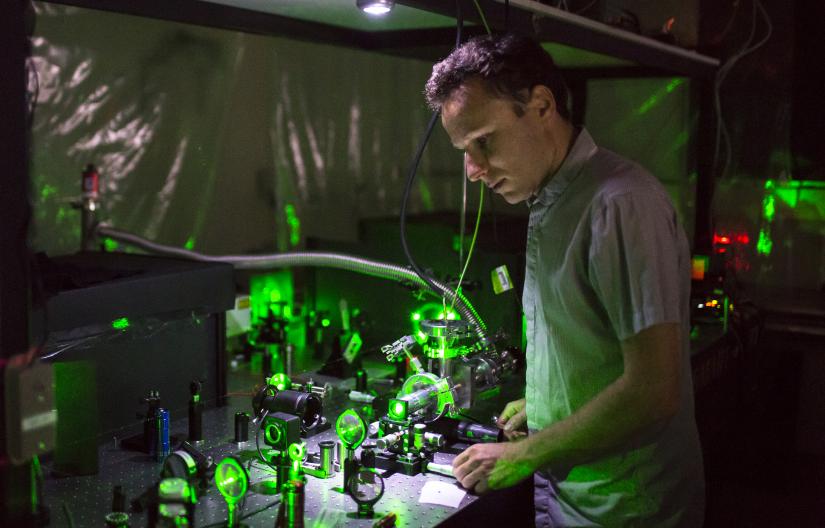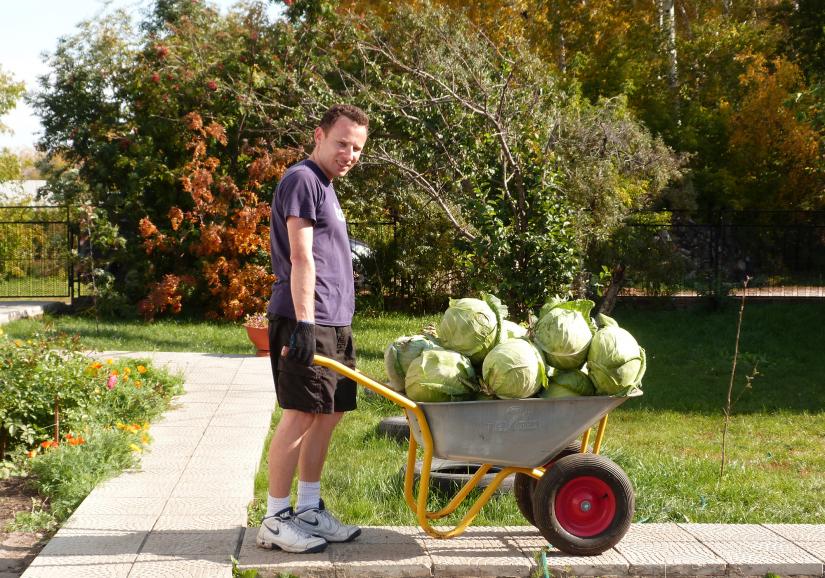Professor Igor Aharonovich has been welcomed as a 2024 Fellow of SPIE, the International Society for Optics and Photonics; a significant honour that recognises those who have made groundbreaking scientific achievements in the field.

Professor Igor Aharonovich’s research focuses on the generation of quantum light sources. Photo by Anna Zhu
Professor Igor Aharonovich from the Faculty of Science is a physicist who specialises in nanotechnology, materials science and nanophotonics. He is UTS node director of the ARC Centre of Excellence for Transformative Meta-Optical Systems and a professor in School of Maths and Physical Sciences.
Professor Aharonovich has just been welcomed as a 2024 Fellow of SPIE, the International Society for Optics and Photonics; a significant honour that recognises those who have made groundbreaking scientific achievements in the field.
What research are you working on now?
We’re at the second quantum revolution, where quantum effects – lasers, for example – are being used for new applications, and we are missing the hardware. The entire world is exploring new quantum possibilities and the potential is for benefits to flow to every area of life – from secure communication to sensing with unprecedented resolution. But there is no one-size-fits-all solution, like with silicon and electronics. I’m specifically interested in the problems around generation of quantum sources. Unlike commercial LEDs, a quantum light source has to emit only one photon at a time. Such a source is often referred to as a quantum emitter. These emitters carry the information and are the hardware for quantum photonics.
Currently, our team is working to understand the chemical origin of quantum emitters (single defects) in hexagonal boron nitride and working really hard to engineer them on demand. That way, you can (hopefully) one day just order a quantum source on the internet.

The benefits from quantum applications could flow to every area of life, says Igor Aharonovich. Photo by Anna Zhu
What led you into this field?
Curiosity and believing the impossible may be possible. I owe a lot to the inspirational and driven people who supervised me – as a master’s student (Professor Shay Lifshitz, Technion – Israel Institute of Technology), as a PhD candidate (Professor Steven Prawer, University of Melbourne) and a postdoctoral researcher (Professor Evelyn Hu, Harvard University).
I have also had the benefit of great mentors at every career stage – can anyone survive without them? A good mentor is there to guide and help you and provide an unbiased opinion and support. I was lucky to meet quite a few dedicated people who did just that.
What are your proudest moments?
That’s always a hard question because the human memory recalls the most recent “sparky moments”. When I got admitted into a PhD at Melbourne Uni, I thought it was a massive achievement; the same when I got into Harvard; and the same when I got a position at UTS. But in academia, what makes you really happy and proud is to see the achievement of others – seeing my PhD students graduate, seeing my postdoctoral researchers start their own academic careers. That makes me very proud.
What school experience explains the most about who you are today?
[Laughs] My high school English teacher in Israel was an Aussie grandma – she had a massive accent and we all found it really hard to understand her. She would always wear the traditional Australian Akubra hat and rather funky clothes. I guess that’s when I decided I should move to Oz.
A good mentor is there to guide and help you and provide an unbiased opinion and support.
Professor Igor Aharonovich
I was born in Moscow but my family moved to Israel when I was a kid, right in the middle of the second gulf war. They were crazy times – we had to wear gas masks to school. I studied in Israel right through to the end of my master’s, then moved to Australia which I hope to call home for the foreseeable future.
Are you following in the family footsteps of any physics professors?
Certainly not – no academics at all, though my uncle had a PhD in chemistry. And you never know, one of my kids might be a professor, though that’s a few years off.
What’s life like away from work?
I really like to spend time on the beach playing beach volleyball and of course spending time with my family. My brilliant and amazing partner, Sophia, is by far the more successful person. She is running a massive project on scientific archaeology and ancient history at Macquarie University, raising two kids and getting her career into shape. Our kids are one and four – a really cool age, and they’re bilingual (Russian and English) so communications are fun. We like to travel, when there’s not a pandemic. Our son had visited 10 countries before he turned two. I also like scuba diving and Sydney is really great for that.

Igor Aharonovich helps out with the cabbage harvest on his wife’s farm in Siberia. Photo by Sophia Aharonovich
How do you maintain a healthy work-life balance?
I think work-life balance is a myth. You just need to do what you like and be surrounded by people with positive energy, those that inspire, encourage and challenge you. Then every day is like a new adventure. I am really lucky to have the team and colleagues I do at UTS. It certainly does not feel like work at all.

